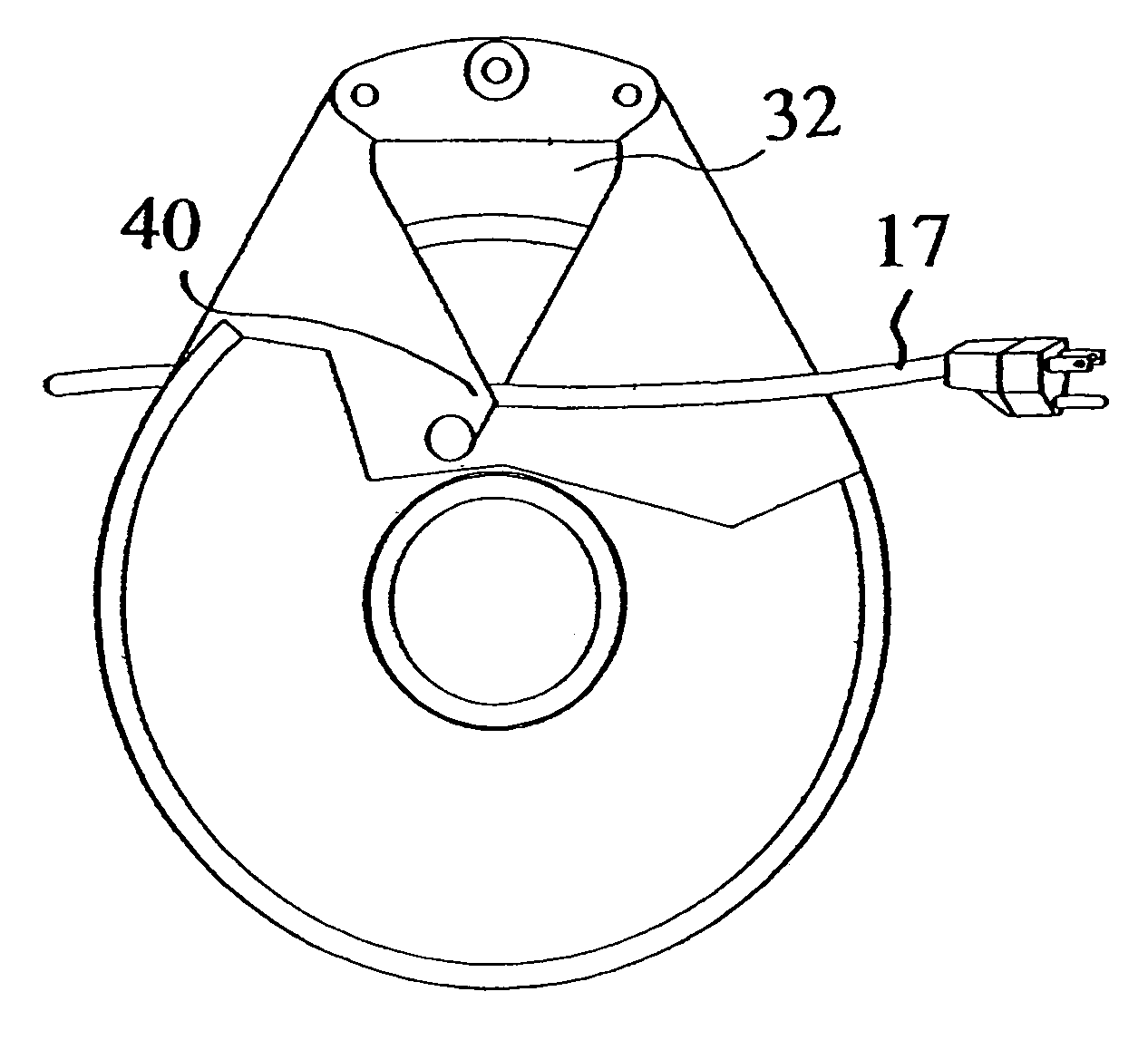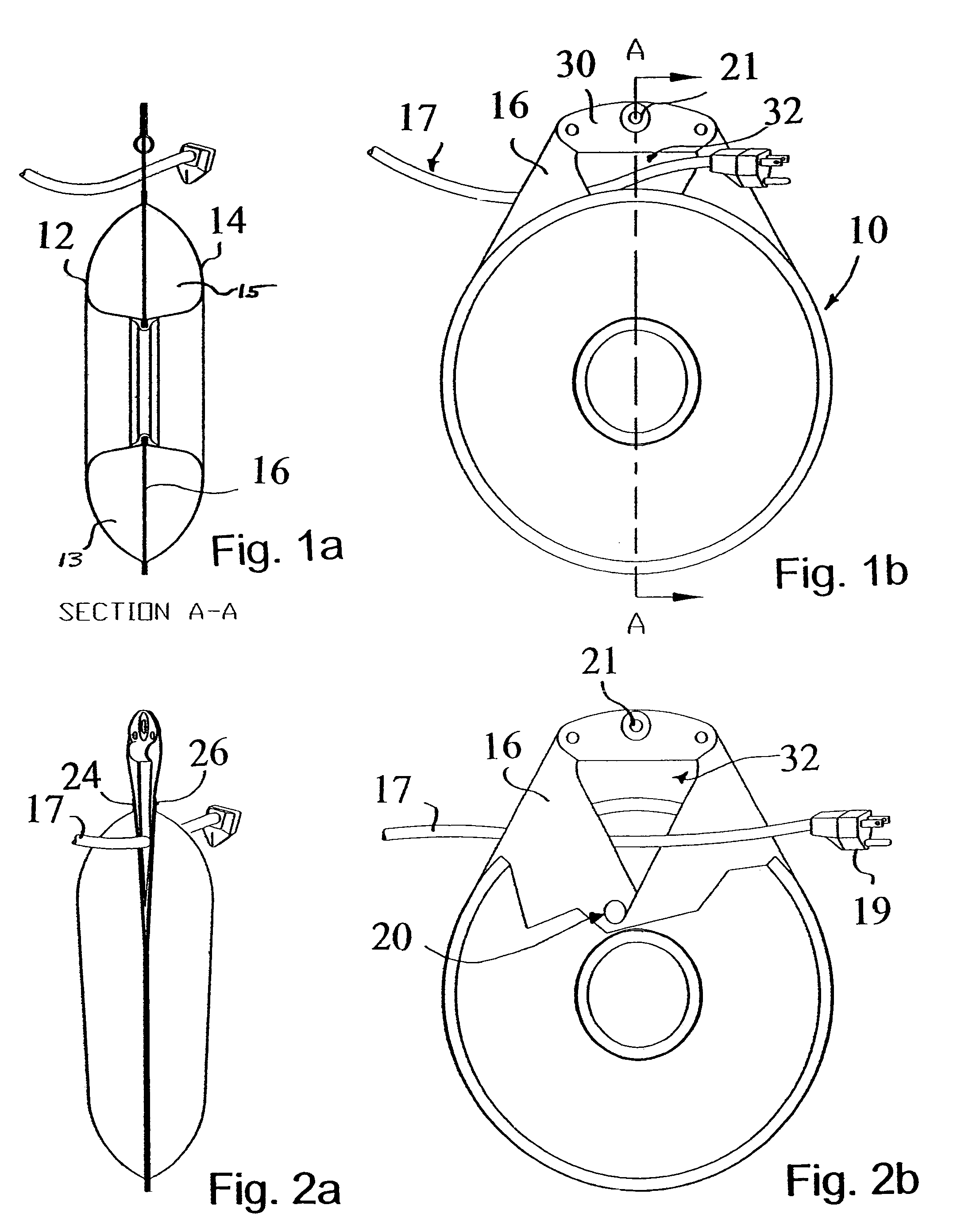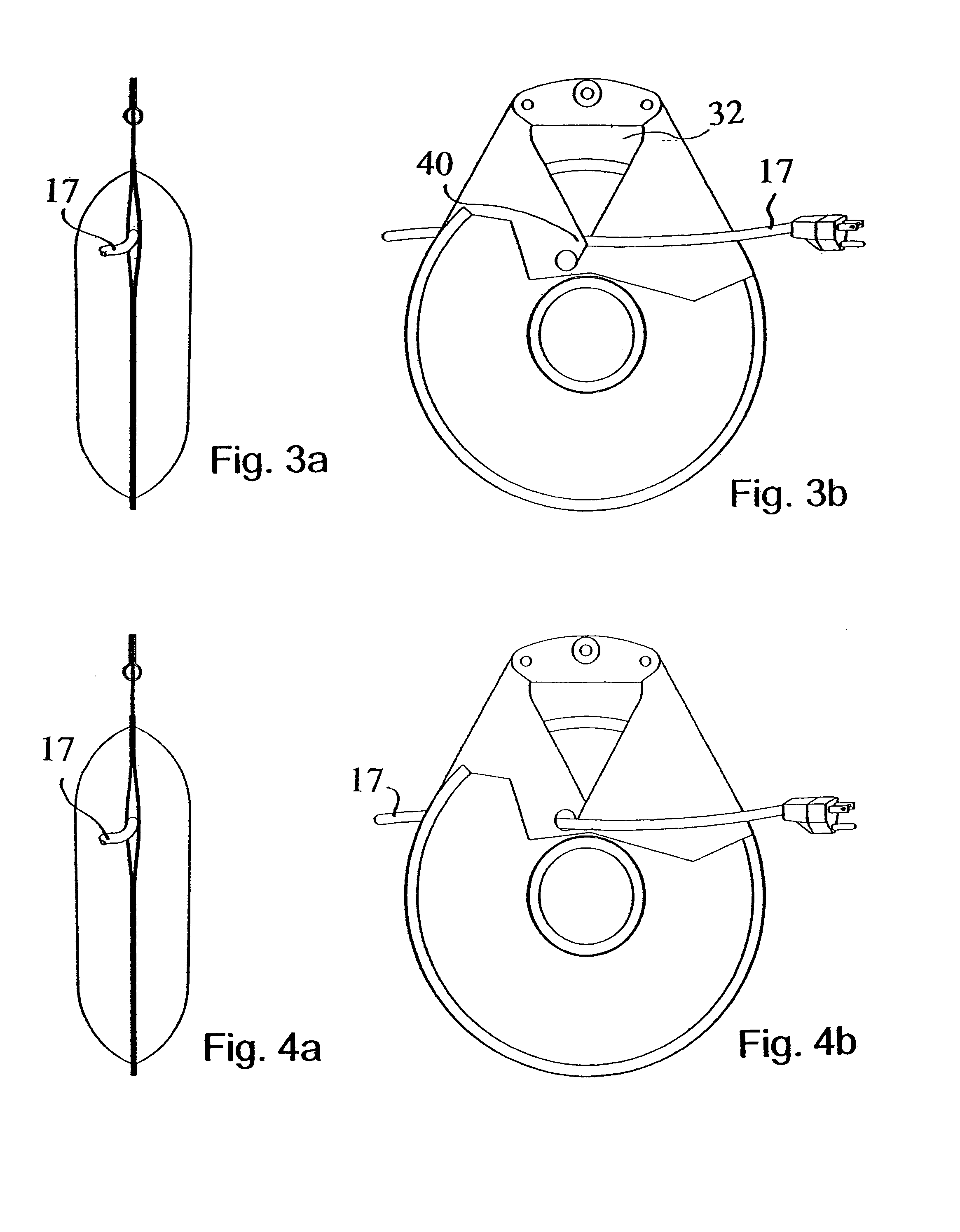Cord holder apparatus
a cord holder and cord technology, applied in the field of cord holder devices, can solve the problems of limited utility of the cord, and inconvenient storage and use of the extension cord, and achieve the effects of avoiding tangling of the cord, avoiding moving parts, and quick winding and unwinding of the two ends
- Summary
- Abstract
- Description
- Claims
- Application Information
AI Technical Summary
Benefits of technology
Problems solved by technology
Method used
Image
Examples
Embodiment Construction
[0090]Referring now to FIG. 1a, the present invention is shown in a cross section view taken along line A-A of FIG. 1b. In FIG. 1A, the two shell halves 12, 14 of the device are shown being separated by divider 16 which passes through the center of the annulus shape of device 10 (FIG. 1b) thereby bilaterally dividing device 10 into shell halves 12 and 14. As best viewed in FIG. 1b, divider 16 is provided with a handle 30 which is integral with divider 16 and which extends outwardly from shell halves 12, 14 of device 10. Handle 30 creates a convenient means of grasping device 10 by the user. Handle 30 is further provided with an aperture 21 which allows device 10 to be hung from a hook. In general, the device operates as described in U.S. Pat. No. 5,992,787; however, the present improvement to the invention described in U.S. Pat. No. 5,992,787 allows a cord 17 (FIG. 1b) to be easily inserted into and engaged with divider 16 to present approximately half of cord 17 on one side of divi...
PUM
 Login to View More
Login to View More Abstract
Description
Claims
Application Information
 Login to View More
Login to View More - R&D
- Intellectual Property
- Life Sciences
- Materials
- Tech Scout
- Unparalleled Data Quality
- Higher Quality Content
- 60% Fewer Hallucinations
Browse by: Latest US Patents, China's latest patents, Technical Efficacy Thesaurus, Application Domain, Technology Topic, Popular Technical Reports.
© 2025 PatSnap. All rights reserved.Legal|Privacy policy|Modern Slavery Act Transparency Statement|Sitemap|About US| Contact US: help@patsnap.com



